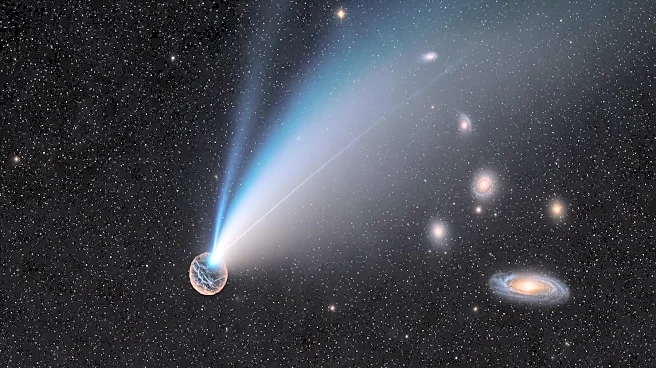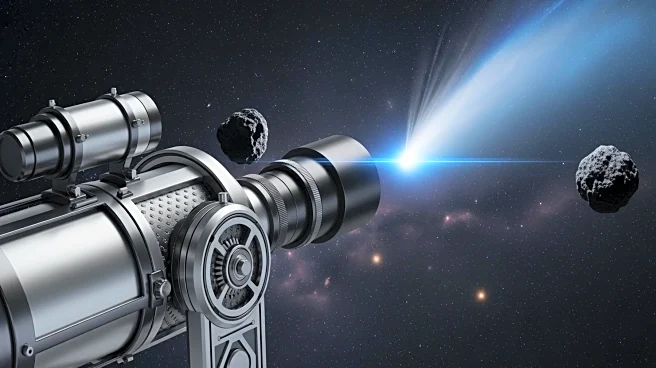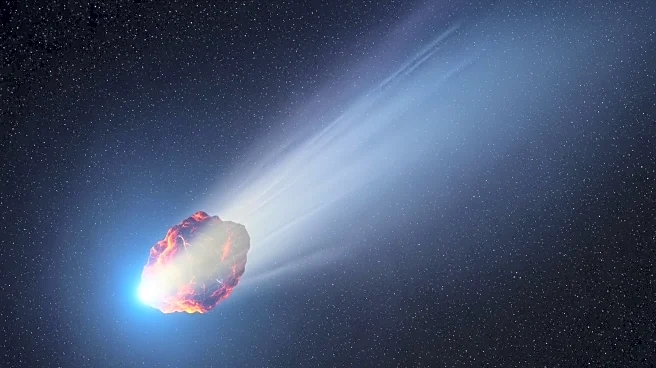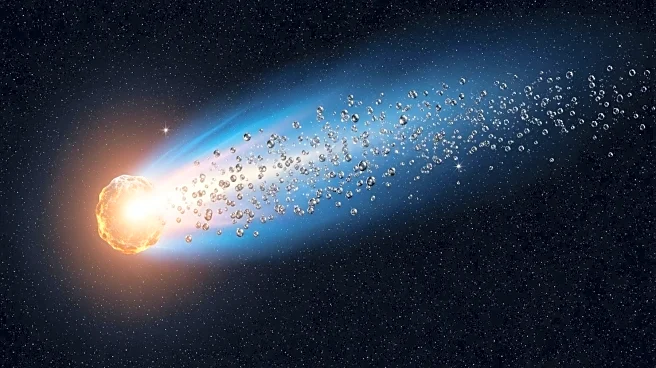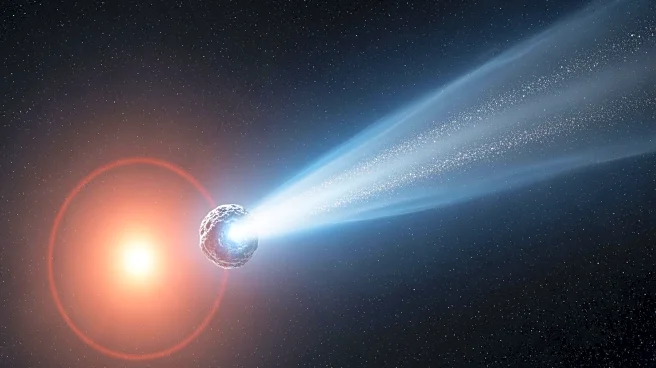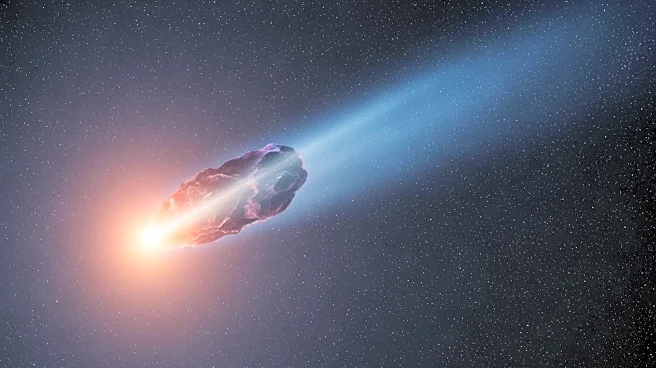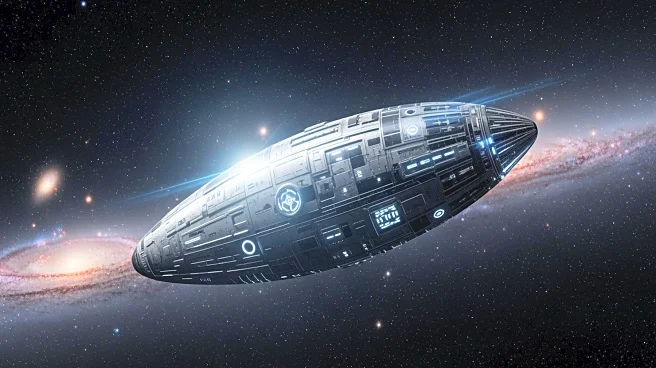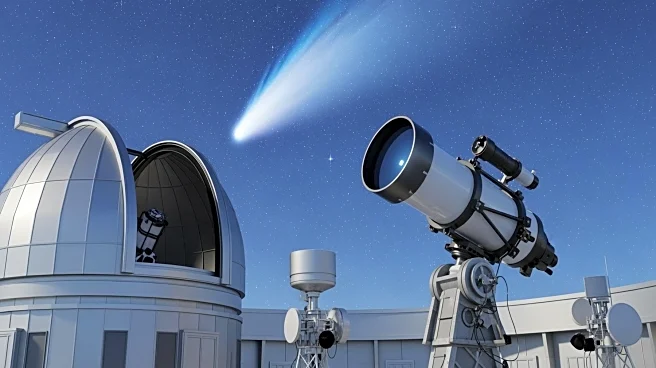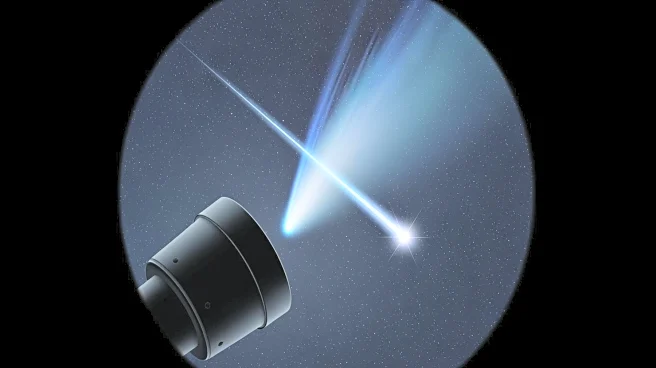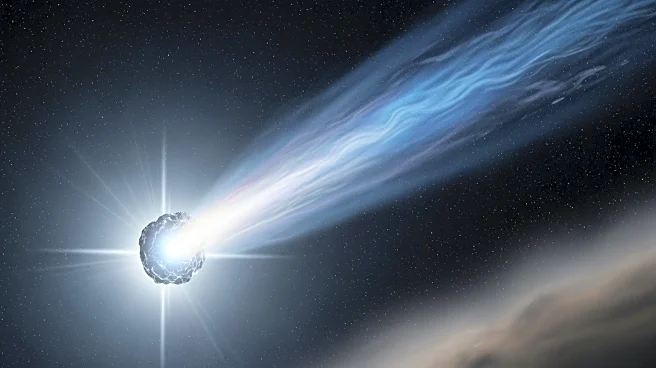What's Happening?
Comet 3I/ATLAS, the third confirmed interstellar comet, has sparked controversy due to claims of anomalous behavior as it approaches perihelion on October 29, 2025. Discovered by the ATLAS telescope, the comet follows
a hyperbolic trajectory, entering and exiting the solar system without orbiting the Sun. Social media and figures like Avi Loeb have fueled speculation about its artificial nature, citing trajectory shifts and unusual brightness. However, mainstream astronomy attributes these phenomena to natural cometary outgassing and non-gravitational forces.
Why It's Important?
The debate surrounding 3I/ATLAS highlights the intersection of scientific observation and public speculation. Understanding the comet's behavior is crucial for planetary defense and the study of interstellar objects. The controversy underscores the need for clear communication between scientists and the public, as misinformation can lead to unwarranted fears or expectations. The comet's study provides insights into the dynamics of interstellar objects and their potential impact on Earth.
What's Next?
As 3I/ATLAS reaches perihelion, astronomers will continue to monitor its trajectory and brightness. Observations will focus on confirming its natural behavior and dispelling myths of artificiality. Amateur astronomers are encouraged to observe the comet using telescopes, contributing to a collective understanding of its characteristics. The comet's passage offers an opportunity for scientific engagement and public education on celestial phenomena.
Beyond the Headlines
The controversy over 3I/ATLAS reflects broader societal themes of skepticism and the search for extraterrestrial intelligence. It raises questions about the role of social media in shaping public perception of scientific events and the importance of maintaining scientific integrity in the face of speculation.
